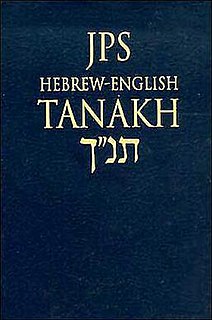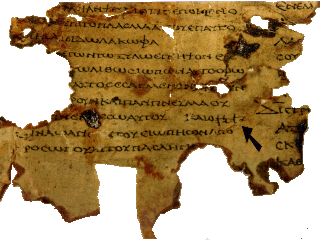 W
WBiblia Hebraica refers primarily to the three editions of the Hebrew Bible edited by Rudolf Kittel. When referenced, Kittel's Biblia Hebraica is usually abbreviated BH, or BHK. When specific editions are referred to, BH1, BH2 and BH3 are used. Biblia Hebraica is a Latin phrase meaning Hebrew Bible, traditionally used as a title for printed editions of the Tanakh. Less commonly, Biblia Hebraica may also refer to subsequent editions in the Biblia Hebraica series which build on the work of Kittel's editions.
 W
WThe Biblia Hebraica Quinta Editione, abbreviated as BHQ or rarely BH5, is the fifth edition of the Biblia Hebraica and when complete will supersede the fourth edition, the Biblia Hebraica Stuttgartensia (BHS).
 W
WThe Biblia Hebraica Stuttgartensia, abbreviated as BHS or rarely BH4, is an edition of the Masoretic Text of the Hebrew Bible as preserved in the Leningrad Codex, and supplemented by masoretic and text-critical notes. It is the fourth edition in the Biblia Hebraica series started by Rudolf Kittel and is published by the Deutsche Bibelgesellschaft (German Bible Society) in Stuttgart.
 W
WThere have been many Coptic versions of the Bible, including some of the earliest translations into any language. Several different versions were made in the ancient world, with different editions of the Old and New Testament in five of the dialects of Coptic: Bohairic (northern), Fayyumic, Sahidic (southern), Akhmimic and Mesokemic (middle). Biblical books were translated from the Alexandrian Greek version.
 W
WThe Etz Hayim humash, also known as Etz Hayim: Torah and Commentary, is a humash published and used by the Conservative Jewish movement. Its production involved the collaboration of the Rabbinical Assembly, the United Synagogue of Conservative Judaism, and the Jewish Publication Society.
 W
WThe Israel Bible is a bilingual English-Hebrew version of the Hebrew Bible, edited by Rabbi Tuly Weisz and published in June 2018, for the 70th anniversary of the Israeli Declaration of Independence. It contains the full text of the Hebrew Bible along with scholarly introductions to each book of the Bible and various maps, charts, illustrations, and photographs. Weisz says that his bible is the only one "exclusively dedicated to the Land of Israel, the people of Israel and the God of Israel". The commentary, by a team of Orthodox rabbis, draws a strong connection between biblical Israel and the modern State of Israel. The book is aimed at both Jews and Christians. The forward was written by Rabbi Shlomo Riskin, founder of the Center for Jewish-Christian Understanding and Cooperation.
 W
WJewish English Bible translations are English translations of the Hebrew Bible (Tanakh) according to the Masoretic Text, in the traditional division and order of Torah, Nevi'im, and Ketuvim. Most Jewish translations appear in bilingual editions (Hebrew–English).
 W
WThe Jewish Publication Society of America Version (JPS) of the Tanakh was the first Bible translation published by the Jewish Publication Society of America and the first translation of the Tanakh into English by a committee of Jews. The full publication title is The Holy Scriptures According to the Masoretic Text: A New Translation with the Aid of Previous Versions and with Constant Consultation of Jewish Authorities.
 W
WThe New Jewish Publication Society of America Tanakh, first published in complete form in 1985, is a modern Jewish 'written from scratch' translation of the Masoretic Text of the Hebrew Bible into English. It is based on revised editions of earlier publications of subdivisions of the Tanakh such as the Torah and Five Megillot which were originally published from 1969–1982. It is unrelated to the original JPS Tanakh translation, which was based on the Revised Version and American Standard Version but emended to more strictly follow the Masoretic Text, beyond both translations being published by the Jewish Publication Society of America.
 W
WThe Masoretic Text is the authoritative Hebrew Aramaic text of the 24 books of the Tanakh in Rabbinic Judaism. The Masoretic Text defines the Jewish canon and its precise letter-text, with its vocalization and accentuation known as the masorah. It was primarily copied, edited and distributed by a group of Jews known as the Masoretes between the 7th and 10th centuries of the Common Era (CE).
 W
WThe Mikraot Gedolot "Great Scriptures," often called the "Rabbinic Bible" in English, is an edition of the Tanakh that generally includes four distinct elements:The Biblical text according to the masorah in its letters, vocalization, and cantillation marks Masoretic notes on the Biblical text Aramaic Targum Biblical commentaries
 W
WA Poet's Bible: Rediscovering The Voices of the Original Text is a 1991 partial translation into English of the Old Testament, including some books of the Hebrew Bible along with related apocrypha, by David Rosenberg. The book was received well by scholars and critics, receiving the PEN Translation Prize in 1992. However, it did not do well commercially and is currently out of print.
 W
WThe Greek Old Testament, or Septuagint, is the earliest extant Koine Greek translation of books from the Hebrew Bible, various biblical apocrypha, and deuterocanonical books. The first five books of the Hebrew Bible, known as the Torah or the Pentateuch, were translated in the mid-3rd century BCE; they did not survive as original-translation texts, however, except as rare fragments. The remaining books of the Greek Old Testament are presumably translations of the 2nd century BCE.
 W
WThe Septuagint (LXX), the ancient Alexandrian translation of Jewish scriptures into Koine Greek exists in various manuscript versions.
 W
WTargum Jonathan, otherwise referred to as Targum Yonasan/Yonatan, is the official eastern (Babylonian) targum to the Nevi'im.
 W
WTargum Onkelos, תרגום אונקלוס, is the Jewish Aramaic targum ("translation") of the Torah, accepted as an authoritative translated text of the Five Books of Moses and thought to have been written in the early 2nd-century CE.
 W
WTargum Pseudo-Jonathan is a western targum (translation) of the Torah (Pentateuch) from the land of Israel. Its correct title was originally Targum Yerushalmi, which is how it was known in medieval times. But because of a printer's mistake it was later labeled Targum Jonathan, in reference to Jonathan ben Uzziel. Some editions of the Pentateuch continue to call it Targum Jonathan to this day. Most scholars refer to the text as Targum Pseudo-Jonathan or TPsJ.
 W
WYemenite scrolls of the Law containing the Five Books of Moses represent one of three authoritative scribal traditions for the transmission of the Torah, the other two being the Ashkenazi and Sephardic traditions that slightly differ. While all three traditions purport to follow the Masoretic traditions of Aaron ben Asher, slight differences between the three major traditions have developed over the years. Biblical texts proofread by ben Asher survive in two extant codices, the latter said to have only been patterned after texts proofread by Ben Asher. The former work, although more precise, was partially lost following its removal from Aleppo in 1947.